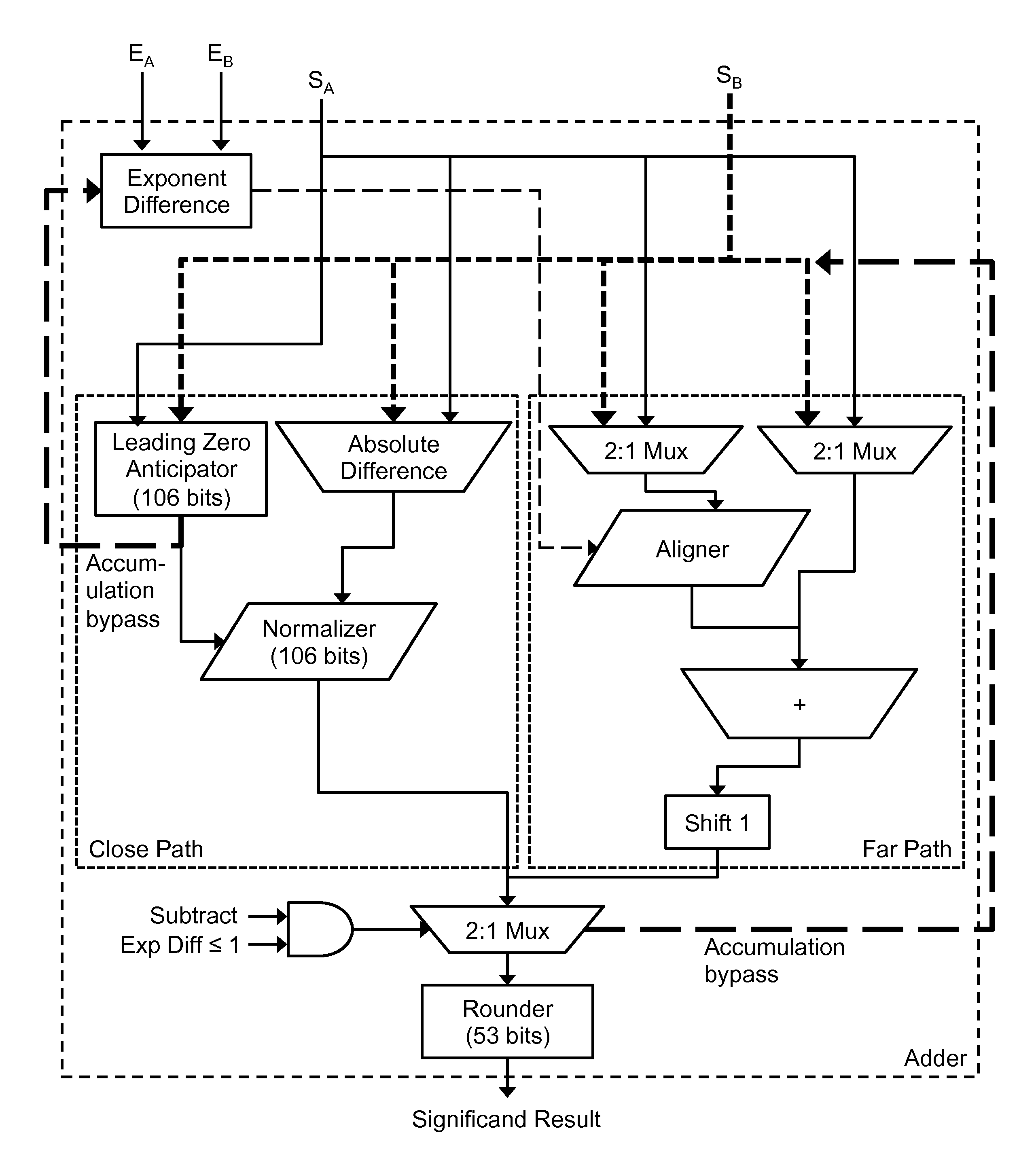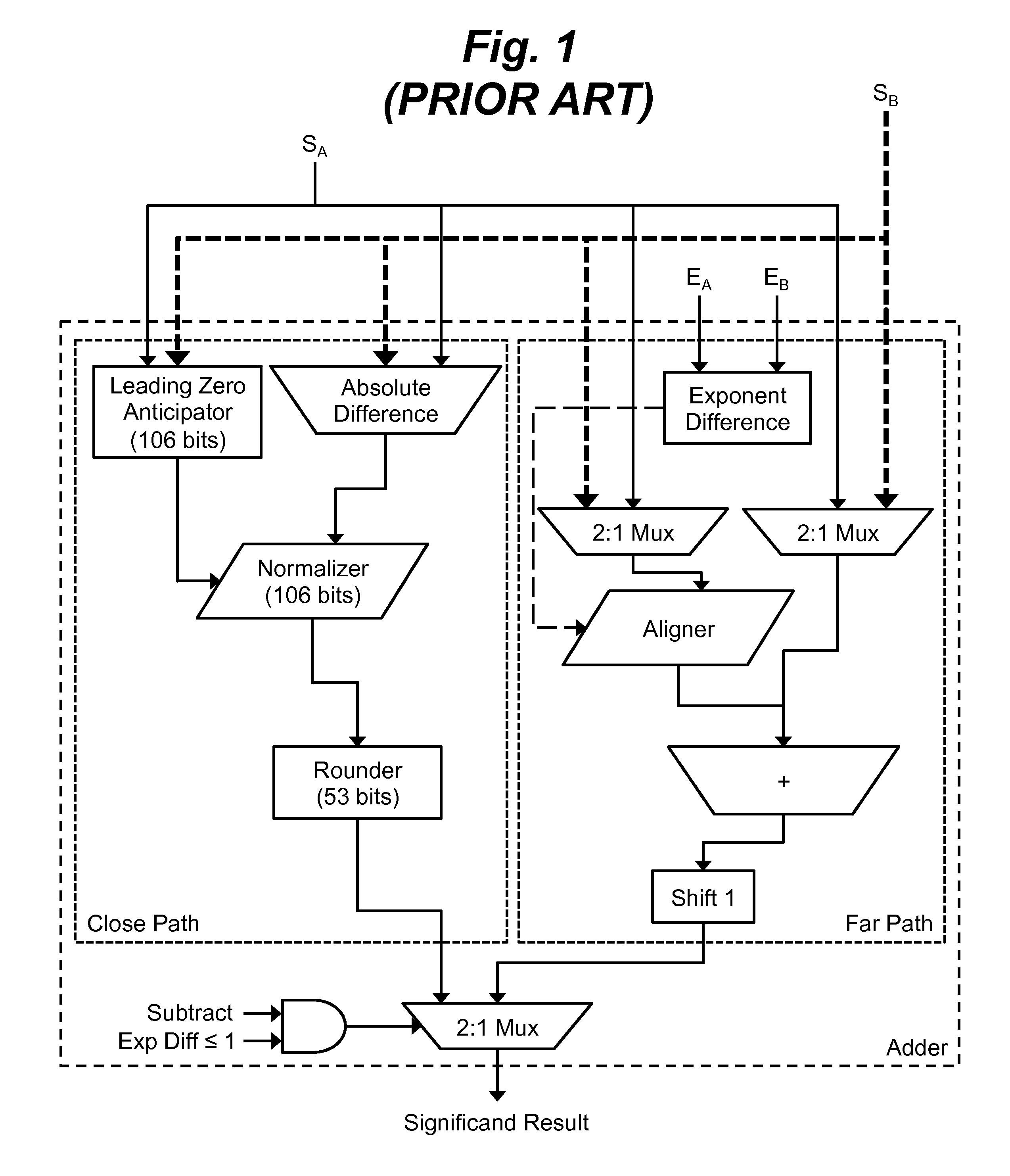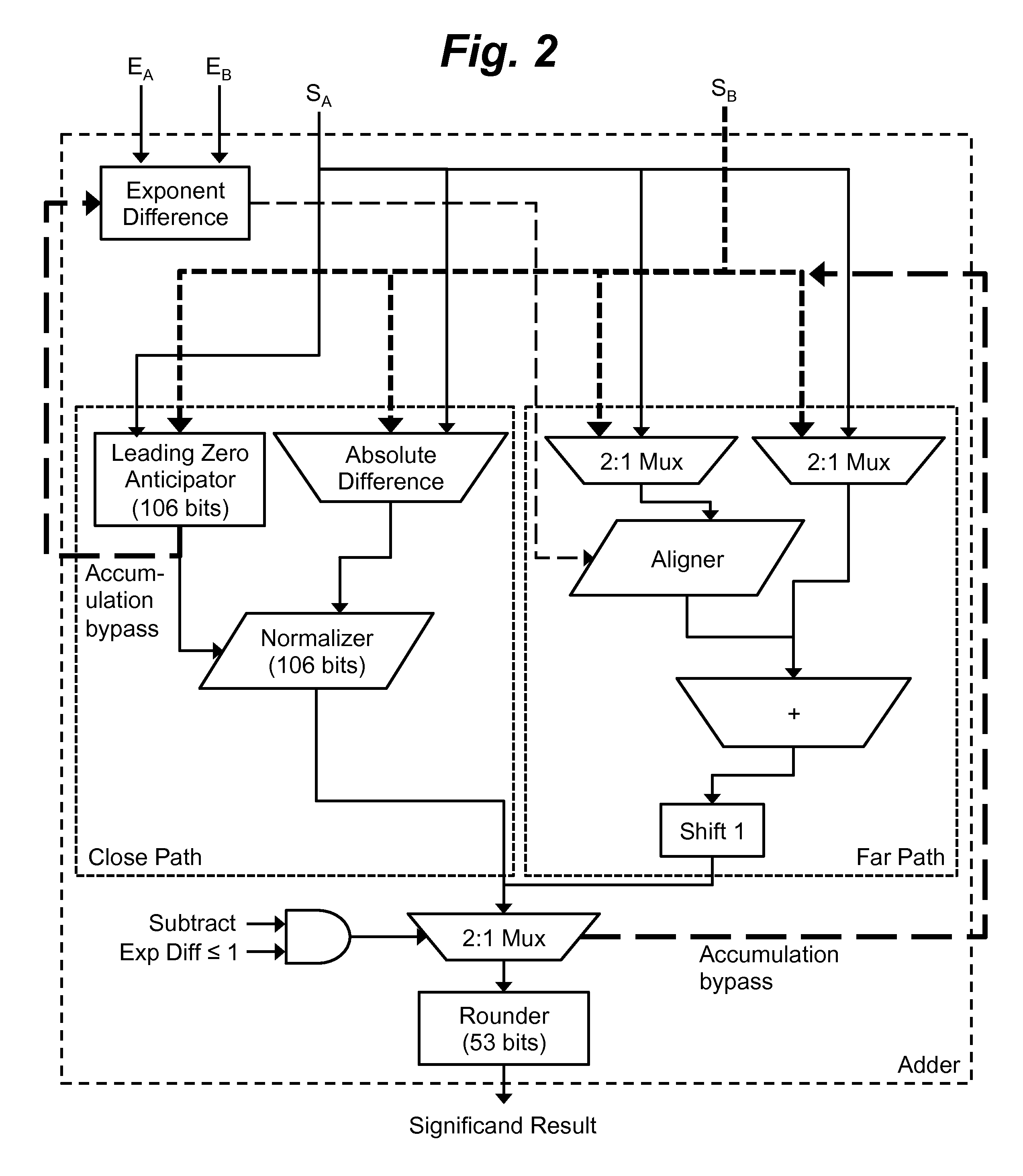Floating-point multiply-add unit using cascade design
a multiply-add unit and cascade design technology, applied in computing, computation using denominational number representation, instruments, etc., can solve the problem of low effective latency between operations with sum dependence, and achieve low effective latency, small effect on other latencies, and more latency sensitive
- Summary
- Abstract
- Description
- Claims
- Application Information
AI Technical Summary
Benefits of technology
Problems solved by technology
Method used
Image
Examples
Embodiment Construction
[0023]Floating point multiplication followed by separate floating point addition is often made more efficient through the use of a conventional FMA architecture that performs the multiplication tree of SA and SC in parallel with the alignment with SB, followed by addition of three terms (two from the multiplication tree and SB), normalization and rounding. This FMA reduces latency and rounding error compared to separate multiplication followed by addition. In a cascaded FMA, a multiply-add is computed by simply cascading the two functional elements. However, because of the requirement of unlimited precision for intermediate results of FMA instructions, the multiplier and adder are not standard floating point adders / multipliers but are customized. For example, a double precision CMA design contains the following stages:[0024]A multiplier that takes 2 double-precision operands A,C to generate the result A×C in “quad” precision (106 bit mantissa, 13 bit exponent)[0025]An asymmetric add...
PUM
 Login to View More
Login to View More Abstract
Description
Claims
Application Information
 Login to View More
Login to View More - R&D
- Intellectual Property
- Life Sciences
- Materials
- Tech Scout
- Unparalleled Data Quality
- Higher Quality Content
- 60% Fewer Hallucinations
Browse by: Latest US Patents, China's latest patents, Technical Efficacy Thesaurus, Application Domain, Technology Topic, Popular Technical Reports.
© 2025 PatSnap. All rights reserved.Legal|Privacy policy|Modern Slavery Act Transparency Statement|Sitemap|About US| Contact US: help@patsnap.com



